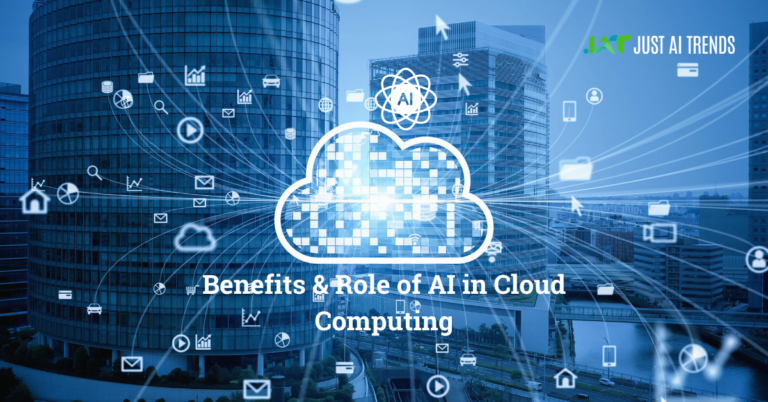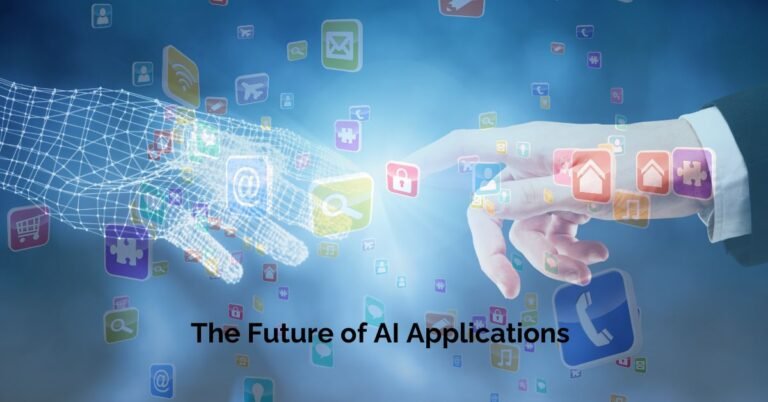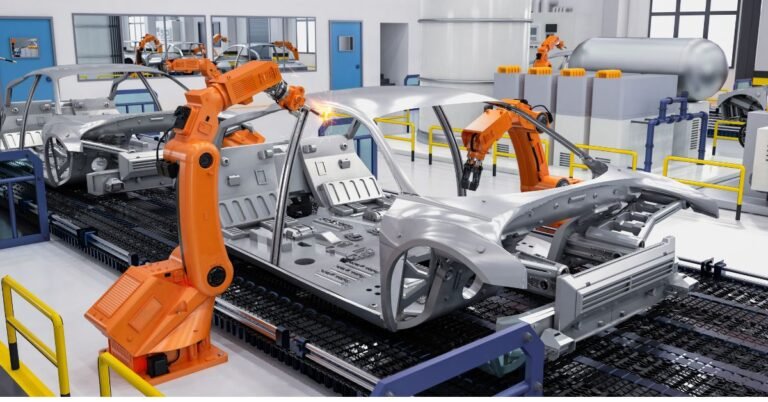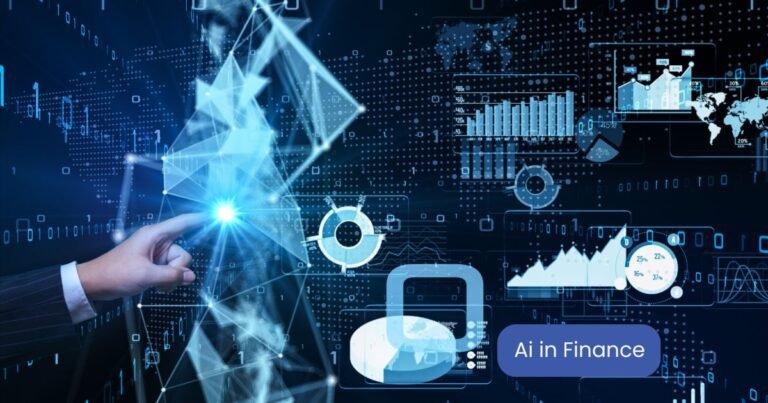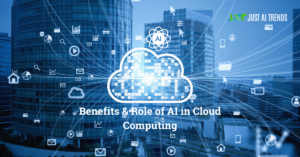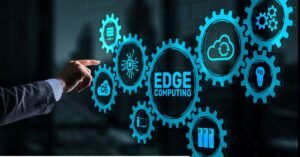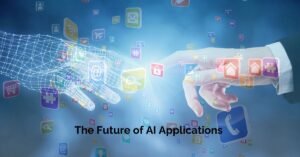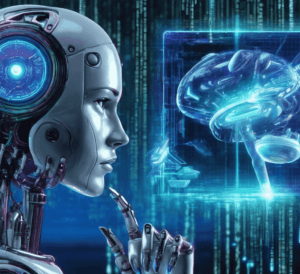AI Software: From Business Automation to Creative Innovation
The world is witnessing a revolution driven by artificial intelligence (AI). This powerful technology is rapidly transforming industries, reshaping how businesses operate, and even impacting our daily lives. AI software, the driving force behind this transformation, is no longer a futuristic concept but a tangible reality that is reshaping our world.

I. Introduction: AI Software
A. The AI Revolution: A Glimpse Across Industries
The impact of AI is far-reaching, permeating every sector imaginable. From healthcare and finance to retail and manufacturing, AI software is automating tasks, optimizing processes, and generating groundbreaking insights.
- Healthcare: AI-powered medical imaging analysis is detecting diseases with unprecedented accuracy, while virtual assistants are streamlining patient care.
- Finance: Fraudulent transactions are being flagged in real-time by AI algorithms, while chatbots are providing personalized financial advice.
- Retail: Recommendation engines are suggesting products that customers are most likely to purchase, while AI-powered supply chain management is optimizing inventory levels.
- Manufacturing: Predictive maintenance is preventing equipment failures, while robots are collaborating with humans on production lines.
These are just a few examples of the transformative power of AI software. As technology continues to evolve, we can expect even more profound changes across all industries.
B. Why AI Software Matters: Beyond Business Benefits
The benefits of AI software extend far beyond the realm of business. This technology has the potential to address some of the world’s most pressing challenges, such as climate change, poverty, and disease.
- Climate Change: AI can be used to develop renewable energy sources, optimize energy consumption, and predict extreme weather events.
- Poverty: AI-powered tools can be used to identify and target aid to those in need, while also providing financial services to underserved communities.
- Disease: AI can accelerate drug discovery and development, improve disease diagnosis and treatment, and personalize healthcare for better outcomes.
By harnessing the power of AI software, we can create a more sustainable, equitable, and healthy future for all.
II. AI for Business Automation and Efficiency
One of the most significant applications of AI software is in business automation and efficiency. By automating repetitive tasks and streamlining processes, AI can free up human employees to focus on more strategic and creative work.
A. Business Process Automation (BPA): The Efficiency Engine
BPA software automates manual tasks, such as data entry, invoicing, and customer service inquiries. This can lead to significant improvements in productivity, accuracy, and cost savings.
- Definition and Significance: BPA software uses robotic process automation (RPA) and other technologies to mimic human actions on computers. This allows businesses to automate repetitive tasks, freeing up employees for more valuable work.
- Examples in Action: A travel agency can use BPA software to automate the process of booking flights and hotels, while a manufacturing company can use it to track inventory levels and reorder materials automatically.
B. Decision Support Systems (DSS): Empowering Informed Choices
DSS software provides businesses with data-driven insights to support decision-making. By analyzing large amounts of data, DSS can identify trends, predict outcomes, and recommend courses of action.
- Role in Decision-Making: DSS can help businesses make better decisions about pricing, marketing, staffing, and other critical areas. By providing data-driven insights, DSS can take the guesswork out of decision-making and lead to improved results.
- Real-World Success Stories: A retail chain used DSS to identify which products were most likely to sell during a holiday promotion, resulting in a significant increase in sales. A logistics company used DSS to optimize its delivery routes, reducing costs and improving customer satisfaction.
C. Predictive Maintenance: Preventing Problems Before They Happen
Predictive maintenance software uses AI to analyze sensor data from equipment and predict when it is likely to fail. This allows businesses to take preventive measures, such as scheduling maintenance or replacing parts, before a breakdown occurs.
- How AI Optimizes Maintenance: Predictive maintenance software uses machine learning algorithms to analyze sensor data, such as vibration, temperature, and pressure. By identifying patterns in the data, the software can predict when equipment is likely to fail.
- Benefits for Businesses: Predictive maintenance can prevent costly downtime, extend the life of equipment, and improve safety. It can also lead to increased productivity and efficiency, as businesses no longer need to wait for equipment to break down before taking action.
III. AI for Customer Engagement and Experience
In today’s competitive landscape, providing a positive customer experience is essential for business success. AI software can be used to personalize interactions, improve communication, and resolve customer issues quickly and efficiently.
A. Chatbots and Virtual Assistants: Always Available Support
Chatbots and virtual assistants are computer programs designed to simulate conversation with humans, providing support and assistance in various ways. Here’s how they live up to the claim of “Always Available Support”:
Availability:
- 24/7 access: Unlike human representatives who have limited working hours, chatbots and virtual assistants are available around the clock, 365 days a year. This makes them ideal for handling urgent inquiries or providing support outside of traditional business hours.
- Scalability: They can handle multiple inquiries simultaneously without getting overwhelmed, ensuring prompt responses even during peak times or unexpected surges in demand.
Support capabilities:
- Basic tasks: They can handle routine tasks like answering frequently asked questions, providing information about products or services, and completing simple transactions like booking appointments or placing orders.
- Complex troubleshooting: Some advanced chatbots can delve deeper into complex issues, diagnose problems, and even offer solutions or escalate issues to human agents when necessary.
- Personalized interactions: They can personalize interactions by remembering past conversations, preferences, and context, leading to more efficient and relevant support.
B. Recommendation Engines: Tailoring the Journey
Recommendation engines use AI to analyze customer data and preferences to suggest relevant products, services, or content. This can personalize the customer experience and lead to increased sales and engagement.
- Personalization Powerhouse: Recommendation engines analyze customer purchase history, browsing behavior, and other data points to understand individual preferences. Based on this analysis, they recommend products or services that are most likely to be of interest to each customer.
- Driving Business Growth: By providing personalized recommendations, businesses can increase customer satisfaction, encourage repeat purchases, and discover new sales opportunities. For example, an online retailer might use a recommendation engine to suggest similar items to a customer who is viewing a specific product.
C. Sentiment Analysis: Understanding the Voice of the Customer
Sentiment analysis software uses AI to analyze customer reviews, social media posts, and other online conversations to understand their emotions and opinions. This can help businesses identify areas for improvement, address customer concerns, and build stronger relationships.
- Listening to Customer Emotions: Sentiment analysis can identify positive, negative, and neutral sentiments in customer feedback. This information can be used to improve products and services, address customer complaints, and tailor marketing messages.
- Brand Enhancement Through Insights: By understanding how customers feel about their brand, businesses can take steps to improve their reputation and build stronger relationships with their audience. For example, a restaurant might use sentiment analysis to identify negative reviews about the service and take steps to improve the customer experience.
IV. AI for Data Analysis and Insights
Data is the lifeblood of any business, but in today’s digital age, it can be overwhelming to manage and analyze. AI software can help businesses make sense of their data and extract valuable insights that can be used to improve decision-making, optimize processes, and gain a competitive edge.
A. Machine Learning (ML) Platforms: Empowering Data-Driven Decisions
ML platforms provide businesses with the tools and algorithms needed to build and train their own AI models. These models can be used to analyze data, identify patterns, and make predictions.
- Data-Driven Decision-Making: ML platforms allow businesses to analyze their data in real-time and identify trends that would be difficult to see manually. This information can be used to make better decisions about everything from pricing and marketing to product development and resource allocation.
- Applications Across Industries: ML platforms are being used in a wide range of industries, from finance and healthcare to retail and manufacturing. For example, a bank might use an ML platform to predict which customers are most likely to default on a loan, while a manufacturer might use one to optimize its production processes.
B. Data Visualization and Exploration: Seeing the Unseen
Data visualization tools help businesses turn complex data sets into clear and easy-to-understand charts, graphs, and maps. This makes it easier to identify trends, patterns, and outliers in the data.
- Visualizing the Data Landscape: Data visualization tools can be used to visualize large and complex data sets in a way that is easy to understand and interpret. This allows businesses to see patterns and relationships that might be difficult to see in the raw data.
- Extracting Actionable Insights: By making it easier to see the story hidden within the data, data visualization tools can help businesses make better decisions and take action. For example, a healthcare provider might use a data visualization tool to identify which patients are most at risk for a certain disease, so they can take steps to prevent or treat it.
C. Natural Language Processing (NLP) Libraries: Transforming Words into Insights
NLP libraries are software tools that allow computers to understand and process human language. This can be used to analyze text data, such as customer reviews, social media posts, and email, to extract valuable insights.
- Unleashing the Power of Language: NLP libraries can be used to identify keywords, phrases, and sentiments in text data. This information can be used to understand customer feedback, improve marketing campaigns, and develop new products and services.
- Efficient Data Processing: NLP libraries can automate the process of analyzing large amounts of text data, which can save businesses time and money. For example, a marketing agency might use an NLP library to analyze customer reviews of a new product and identify areas for improvement.
V. AI for Creative and Cognitive Tasks
AI is not just about automating tasks and analyzing data. It is also being used to perform creative and cognitive tasks that were once thought to be the exclusive domain of humans.
A. Content Creation: Unleashing the AI Muse
AI software can be used to generate creative content, such as articles, blog posts, and even music. This can help businesses save time and resources while also producing high-quality content.
- Blog posts and articles: Quickly generate outlines, brainstorm catchy headlines, and write engaging introductions and conclusions.
- Product descriptions: Craft compelling product descriptions that highlight key features and benefits, capturing customers’ attention.
- Social media posts: Generate creative social media captions, hashtags, and even witty replies to comments, keeping your audience engaged.
- Scripts and storyboards: Spark ideas for video scripts or even draft basic storyboards, letting AI handle the initial narrative flow.
These tools may not replace the human element of creativity entirely, but they can be a valuable asset for speeding up the content creation process and overcoming writer’s block.
B. Design and Prototyping: Accelerating Innovation
AI can be your design partner, helping you:
- Generate visual concepts: Experiment with different design variations, colors, and layouts, letting AI suggest unexpected combinations.
- Rapid prototyping: Create rough prototypes of your product or website design quickly, iterating and testing different versions before investing in final development.
- Personalize design elements: Tailor design elements to individual users or customer segments, providing a more unique and relevant experience.
By embracing AI in the design process, you can unlock faster innovation, explore more creative possibilities, and ultimately deliver a product or website that resonates with your target audience.
C. Translation and Localization: Breaking Language Barriers
AI translation tools are breaking down language barriers, allowing you to:
- Translate content into multiple languages: Reach a wider global audience by accurately translating your website, marketing materials, or customer support content.
- Localize content for specific regions: Adapt your content to different cultural nuances and local preferences, ensuring it resonates with each audience.
- Real-time communication: Break down language barriers in real time with AI-powered translation tools for video conferencing, live chats, or customer support interactions.
With AI by your side, the world is your oyster when it comes to communication. Connect with diverse audiences, expand your reach, and build stronger relationships across borders.
These are just a few examples of how AI is transforming the world of creative and cognitive tasks. As AI technology continues to evolve, we can expect even more groundbreaking applications that will push the boundaries of what’s possible.
VI. AI for Healthcare and Medical Applications
The potential of AI in healthcare is vast and transformative. Some key areas include:
A. Medical Imaging Analysis:
- Early disease detection: AI algorithms can analyze medical images, such as X-rays and MRIs, to detect tumors, abnormalities, and other signs of disease at an early stage, when treatment is most effective.
- Improved diagnosis and treatment: AI can help doctors diagnose diseases more accurately and recommend personalized treatment plans based on individual patient data and medical history.
B. Drug Discovery and Development:
- Accelerating research: AI can analyze vast amounts of data to identify promising drug candidates and predict their effectiveness, significantly speeding up the drug discovery process.
- Personalized medicine: AI can analyze patients’ genetic and other data to develop personalized medications and treatments tailored to their specific needs.
C. Personalized Medicine:
- Preventive care: AI can analyze individual health data to identify people at risk for certain diseases and recommend preventive measures to keep them healthy.
- Remote patient monitoring: AI-powered wearable devices and sensors can continuously monitor patients’ health remotely, allowing for early intervention in case of any problems.
These are just a few examples of how AI is revolutionizing healthcare. With its ability to analyze vast amounts of data and identify patterns, AI has the potential to improve the accuracy of diagnosis, personalize treatment plans, and ultimately save lives.
VII. Conclusion
As we have seen, AI software is no longer a futuristic concept but a powerful tool that is transforming businesses, industries, and even our daily lives. From automating tasks and optimizing processes to enhancing creativity and revolution


